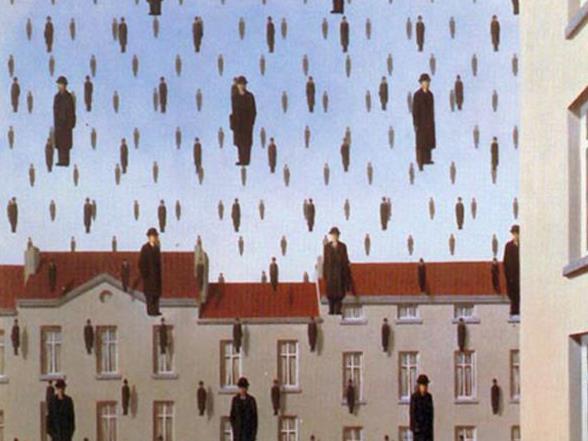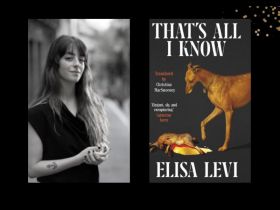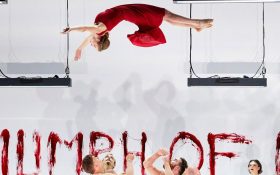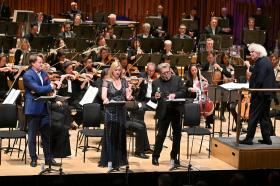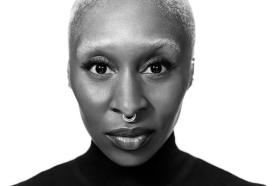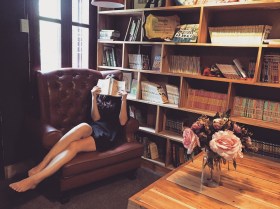Rene Magritte, Golconda
From programs for women directors to cultural diversity initiatives, the arts sector is offering a range of opportunities to diversify both creators and audiences.
But leadership remains, in the words of the latest SAMAG, primarily ‘pale, male and stale’. A panel chaired by Penny Miles, manager of cultural engagement, Australia Council for the Arts considered the options to break the impasse.
Professional pathways
One solution may lie in professional pathways into the arts. Lisa Havilah, director of Carriageworks, believes targeted opportunities for people from culturally diverse and possibly socially disadvantaged backgrounds are needed. ’I think we need to try and look at access – secondary and tertiary education pathways into the arts,’ she said. ‘It’s not just about the programming.’
Jenny Bisset, director, Blacktown Arts Centre and manager, arts and cultural development at Blacktown City Council, agrees. ‘If you live in Western Sydney there is no creative arts tertiary education option. The University of Western Sydney got rid of all of theirs. They’ve got a small writing, literature program and that’s about it.’
Community attitudes
But career opportunities along are unlikely to break down barriers that exist within many communities. Bali Padda, an actor and producer and the co-chair of Equity Diversity Committee at SAMAG. was born in Blacktown and is the son of Indian migrants. He said cultural norms also prevent many people from culturally-diverse backgrounds from taking up careers in the arts. Parents often direct their children into more traditional career choices, said Padda, who was directed into IT before finding his calling in the arts.
He suggested arts organisations needed to help communities see the opportunities in the arts. ‘I guess what arts organisations and companies can do is reach out to those communities and those schools and say let’s devise a program with you so that they can be interested and see that there is a future in that.’
Havilah cited the success of the Western Sydney Wanderers in building an extraordinary community support base for soccer, as a model for getting new communities engaged. ‘The way they sold the Wanderers was best practice community engagement because they went straight to the schools and they invested in those communities over a period of – I think it was even six years – before they started the club and they actually started that team,’ said Havilah.
Board composition
At a governance level, there is the practical difficulty of finding suitably qualified people from a range of backgrounds to sit on boards.
Havilah said it was no longer acceptable not to have a culturally diverse board.
Lee Lewis, Artistic Director at Griffin Theatre Company said her ‘very white’ board was very supportive of the vision of the company but she was conscious of the difficulty of recruiting a more diverse board.
She said boards tended to recruit new board members from their own circle, particularly when they are under time pressure. ‘So how do you make sure the circle of people you know is much wider so that under pressure the people you can call on straightaway are not reflecting your own cultural circle.’
Funding carrots and sticks
There is a powerful role for policymakers and funding bodies – public and private – to help embed diversity.
Havilah said government funding was already contingent on meeting criteria around diversity but Bisset said having been a panel member she believed there was not enough rigour on enforcing these criteria.
‘I actually think that the Australia Council and Arts NSW actually need to be much more hardline than they are. What I’ve observed in that assessment process is that you’re asked to provide all this information about diversity or access and equity but actually it doesn’t impact that much on the funding decision.’
She said even if applications only state that they aren’t doing anything with Indigenous artists or communities, for example, and outlines their reasons or intentions, that would be an improvement. ‘But to just not address it I just can’t get how anybody can access funding if they are not addressing it.’
Padda said the Equity Diversity Committee is planning campaigns aimed at asking members of the Australian Writers’ Guild and Playwriting Australia to pledge to diversity in the works that they create and also where possible in their influence on the casting process.
He would also like to see an endorsement program, similar to the ‘three ticks’ requirement implemented by the British Film Institute. ‘When people apply for government funding for a film in the UK there is about 10 different tick boxes and you have to satisfy at least three of those that cover an aspect of diversity otherwise you won’t get funded.’
Quotas
All the participants in the SAMAG seminar saw a role for quotas, although Lewis pointed out that ‘ideally a theatre company will be thinking ahead of quotas anyway’.
Bisset said the difficulty was how quotas should be calculated. In her case she sets a target of Aboriginal and Torres Strait Islander programming being 25 per cent of their programming. ‘I’ve set that as a target because I like to set a bar. It’s completely made up but that gives us something to head for.’
Access
While much of the discussion focussed on cultural diversity one audience member honed in on disability in question time, observing that government funding for disability in the arts did not seem to have made a visible difference on stages.
Padda said one of the barriers was a lot of stages don’t meet accessibility requirements, adding the Equity diversity committee was planning a campaign to demonstrate the capability of disabled performers to theatre companies. Among its plans is a Performance Showcase Day for disabled performers.
Measuring success
Lewis observed successfully embedding diversity takes courage and consultation with community: ‘You’ve got to be really willing to deconstruct your own tastes. That means being willing to be in that place and brave enough to program work that genuinely doesn’t sit within your own knowledge. Sometimes there’s going to be work that politically and aesthetically is way outside my ability to judge it…’.
In that case she relies on people she can trust to provide her with feedback in that situation.
While panel members acknowledged the efforts of companies like Malthouse Theatre and the regional and remote access program of Melbourne Theatre Company in embedding diversity, Bisset said she was ‘wary’ of major institutions seeking so-called ‘partnerships’ with her arts centre.
‘I’m being very cynical about this: it’s very easy for them to tick a box about diverse audiences if there’s been a partnership with Blacktown Arts Centre because that’s who our audiences are by default – culturally diverse – and I think that’s very lazy.’
So how do theatremakers know when they have real diversity embedded?
For Lewis the best measure would be from growing audiences as she programs more diversity. Havilah said another measure was the nature of the audience, noting Carriageworks was already seeing younger and more culturally-diverse audiences.
Bisset said real success would come when she saw cross-over between different cultural groups. For instance, she said: ‘I will measure the success of our programming when I see the Samoan community coming to something that the Indian and Pakistani community programmed.’
